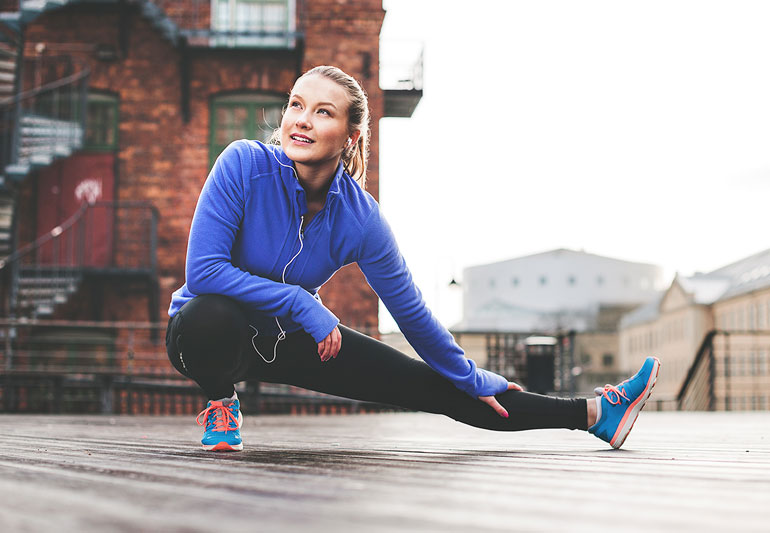Even the most dedicated exercisers can be put off by freezing temperatures. Without motivation, putting your workout gear away for the winter is easy. However, you do not have to abandon your fitness routine because of the cold weather.
Exercise should be a regular component of your routine because it aids in the maintenance or improvement of your general health and well-being. It has numerous short- and long-term advantages, including improved mood, lower blood pressure, and a lower risk of heart disease and Type 2 diabetes. Try these winter exercise tips to stay fit, motivated, and warm.
Stay Safe While Exercising In Chilly Weather
Even in chilly temperatures, exercise is safe for practically everyone. However, if you have specific diseases, such as asthma, heart difficulties, or Raynaud’s disease, consult your doctor first to discuss any particular precautions you require based on your condition or medications.
Examine The Weather And The Wind Chill
Examine the temperature, wind, and moisture levels before venturing outside. Even if you’re dressed warmly, exercising outdoors might be dangerous. Work out in the rain or snow unless you have waterproof gear because becoming wet in the cold can drop your core body temperature.
Understand Your Personal Risk Factors
Unfortunately, some people are more prone to injury or illness when exercising outside in the cold than others. Men, Black people, smokers, and people with heart and vascular diseases are at risk of frostbite.
Watch out for frostbite and hypothermia
Frostbite causes numbness or a stinging sensation on exposed skin, such as your cheeks, nose, and ears. If you suspect frostbite, get out of the cold and gradually warm the affected area by running it under lukewarm water or wrapping it in a blanket. When the body loses more heat than it produces, hypothermia occurs. Some symptoms are shivering, slurred speech, loss of coordination, and fatigue. If you suspect hypothermia, call 1122 right away.
Layer Your Clothing
Dressing in layers is essential for exercising safely in the cold, with three being the magic number:
- An interior layer that comes into contact with your skin and pulls sweat to the outer layers.
- A middle layer that serves as your primary insulator.
- A light outer layer that repels wind and rain while allowing moisture to escape from your body.
Warming Up And Cooling Down
Stretching or walking in place are ways to prepare and restore your muscles before and after a workout.
Keep Your Head, Hands, Feet, And Ears Safe
When it’s cold outside, blood flow is concentrated in your core, leaving your head, hands, and feet vulnerable to frostbite.
Wear a thin pair of wicking glove liners (such as polypropylene) under a couple of heavier gloves or mittens lined with wool or fleece. Put on the mittens or gloves before your hands become cold, and then take off the outer pair when your hands become sweaty.
Consider purchasing exercise shoes that are a half size or one size larger than usual to accommodate thick thermal socks or an extra pair of regular socks. And don’t forget to wear a hat or a headband to protect your ears. Consider wearing a scarf or ski mask to cover your face if it is freezing.
Don’t Forget Your Safety Equipment And Sunscreen
Wear reflective clothing if you exercise outside after dark. And if you ride a bike, you should have both headlights and taillights. Choose footwear with adequate traction to prevent falls, especially if the weather is icy or snowy.
Wear a helmet when skiing, snowboarding, or snowmobiling. Consider using chemical heat packs to warm up your hands or feet, especially if you tend to have cold fingers and toes or a condition like Raynaud’s disease.
It’s just as easy to get sunburned in the winter as in the summer, even more so if you’re exercising in the snow or at high altitudes. Wear sunscreen that blocks both UVA and UVB rays, as well as a sunscreen lip balm. Dark glasses or goggles will shield your eyes from snow and ice glare.
Drink Plenty Of Water
Don’t forget hydration, which is just as important in cold weather as in hot weather. Even if you aren’t thirsty, drink water or sports drinks before, during, and after your workout.
Dehydration can occur in cold weather due to sweating, breathing, the drying power of the winter wind, and increased urine production, but it may be more challenging to detect.
Putting Everything Together For Winter Safety
These tips can help you exercise safely and enjoyably when the temperature drops. Monitor your body’s sensations during cold-weather exercise to help prevent injuries like frostbite.
Consider shortening or canceling your outdoor workout during extreme weather, and know when to return home and warm up. Also, let someone know your exercise route and expected return time if something goes wrong.


